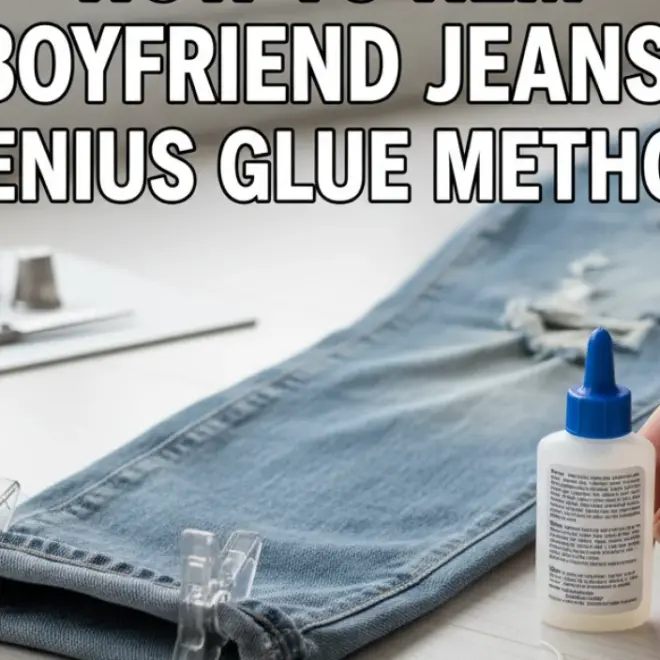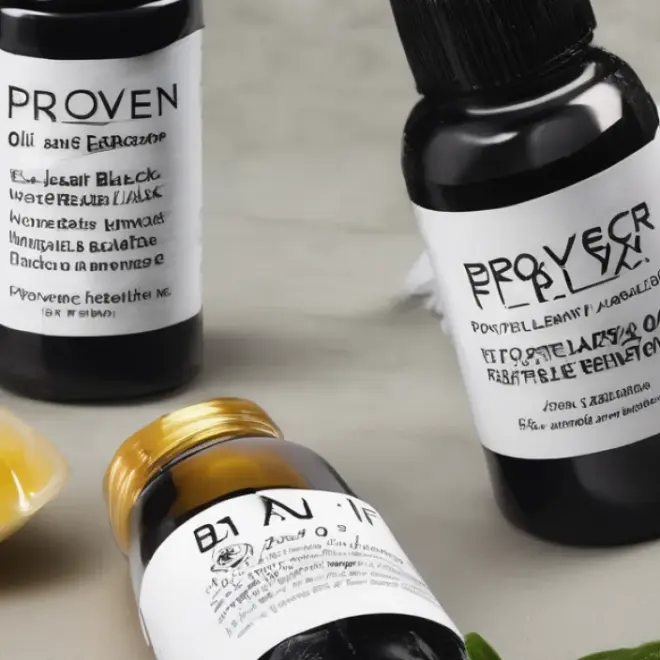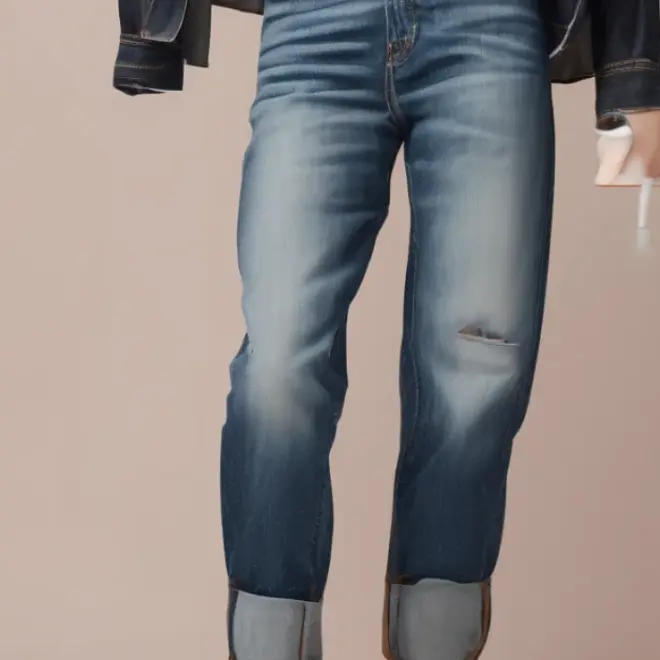Quick Summary: To remove latex paint from jeans, act fast. Gently scrape off wet paint. For dried paint, soak the stained area in warm water with mild detergent or use rubbing alcohol. Test a hidden spot first. Wash as usual after treatment.
<h1>How to Remove Latex Paint from Your Favorite Jeans: A Step-by-Step Guide</h1>
<p>Paint splatters on jeans can feel like a fashion emergency, especially when it’s that one pair you love. Don’t worry! Whether you’re a DIY decorator or just had a little accident, latex paint is surprisingly manageable on denim. This guide will walk you through simple, effective ways to lift those paint marks, keeping your jeans looking great. You’ll learn how to identify the paint and choose the right method for a blemish-free finish.</p>
<h2>Understanding Latex Paint and Denim</h2>
<p>Latex paint, often called water-based paint, is popular for its easy cleanup when wet. Its key ingredient is a binder, usually acrylic, suspended in water. When the water evaporates, the binder forms a flexible, durable film. This is precisely what makes it tricky to remove once it dries and bonds with fabric fibers.</p>
<p>Denim, a sturdy cotton twill, is forgiving but not invincible. Its tight weave can hold onto substances like paint. The key to successful paint removal is understanding how latex paint behaves and applying the right technique before it has time to set too deeply into the denim’s structure. Timing is crucial—the sooner you treat the stain, the easier it will be to remove.</p>
<h2>Essential Tools and Supplies</h2>
<p>Before you start, gather a few common household items. Having these ready will make the process smoother and more effective. The specific items you need might vary slightly depending on the paint’s condition (wet or dry) and the color of your jeans, but a general kit includes:</p>
<ul>
<li><strong>Dull knife or spoon:</strong> For gently scraping off excess paint without damaging the fabric.</li>
<li><strong>Clean cloths or paper towels:</strong> For blotting and applying cleaning solutions.</li>
<li><strong>Warm water:</strong> The base for most cleaning solutions.</li>
<li><strong>Mild liquid detergent:</strong> A gentle but effective cleaner.</li>
<li><strong>Rubbing alcohol (isopropyl alcohol):</strong> A common solvent that can break down dried latex paint. Ensure it’s at least 70% isopropyl alcohol.</li>
<li><strong>Old toothbrush or soft brush:</strong> For gently working cleaning solutions into the fabric.</li>
<li><strong>Optional (for stubborn stains):</strong> Glycerin soap, an old credit card, or a dedicated latex paint remover (use with caution and follow product instructions).</li>
</ul>
<h2>Step-by-Step Guide to Removing Latex Paint</h2>
<p>Diving into paint removal can seem daunting, but by following these steps, you can tackle latex paint stains on your jeans with confidence. We’ll cover both fresh splatters and dried-on messes.</p>
<h3>Step 1: Act Quickly for Wet Paint</h3>
<p>If the paint is still wet, you’re in luck! This is the easiest stage to tackle. Don’t let the paint sit or dry on the fabric.</p>
<ol>
<li><strong>Scrape off excess paint:</strong> Use the dull side of a knife, a spoon, or an old credit card to gently lift as much wet paint as possible from the surface of the jeans. Be careful not to spread the paint or rub it deeper into the fibers.</li>
<li><strong>Rinse with cold water:</strong> Turn the jeans inside out and rinse the stained area from the back with cold, running water. This helps push the paint out rather than further in. Continue rinsing until most of the paint is gone.</li>
<li><strong>Pre-treat with detergent:</strong> Apply a small amount of liquid laundry detergent directly to the remaining paint stain. Gently rub it in with your fingers or a soft brush. Let it sit for about 5-10 minutes.</li>
<li><strong>Wash as usual:</strong> Launder the jeans on a regular cycle with your usual detergent in the warmest water setting appropriate for denim. Check the care label on your jeans for specific washing instructions.</li>
<li><strong>Air dry:</strong> Do NOT put the jeans in the dryer until you are absolutely sure the stain is gone. The heat from the dryer can set any remaining paint permanently. Air dry the jeans and inspect the area. If a stain remains, repeat the process or try a method for dried paint.</li>
</ol>
<h3>Step 2: Dealing with Dried Latex Paint</h3>
<p>Dried latex paint requires a bit more effort, but it’s still possible to remove. Patience is key here.</p>
<h4>Method A: Soaking and Mild Detergent</h4>
<ol>
<li><strong>Scrape gently:</strong> Use a dull knife, spoon, or credit card to carefully scrape away any thick, raised paint remnants. Work from the edges of the stain inward.</li>
<li><strong>Soak the stain:</strong> Fill a basin or sink with warm water and add a generous amount of mild liquid laundry detergent. Submerge the stained portion of the jeans and let it soak for at least 30 minutes, or up to a couple of hours for tougher stains.</li>
<li><strong>Gently scrub:</strong> After soaking, use an old toothbrush or a soft brush to gently work the detergent into the paint stain. Scrub in a circular motion, being careful not to damage the denim fibers.</li>
<li><strong>Rinse and inspect:</strong> Rinse the area thoroughly with warm water. Inspect the stain. If it’s starting to lift, repeat the soaking and scrubbing process.</li>
<li><strong>Wash and air dry:</strong> Once the majority of the paint appears to be gone, wash the jeans as usual and air dry them. Check again for any residual marks before considering them clean.</li>
</ol>
<h4>Method B: Rubbing Alcohol (Isopropyl Alcohol)</h4>
<p><strong>Important Note:</strong> Rubbing alcohol is a solvent and can potentially affect the color of your denim, especially darker washes like black jeans. <strong>Always test on an inconspicuous area first</strong>, such as an inside seam or hem, to ensure it doesn’t cause discoloration or damage before applying it to the main stain.</p>
<p>Rubbing alcohol works well because it can break down the acrylic binder in latex paint. This method is particularly effective on dried paint spots:</p>
<ol>
<li><strong>Test patch:</strong> Dab a small amount of rubbing alcohol onto an inside seam of your jeans with a cotton ball. Let it sit for a minute, then blot with a clean cloth. Check for any color transfer or damage. If it looks okay, proceed.</li>
<li><strong>Apply alcohol:</strong> Place a clean cloth or paper towel underneath the stained area of the jeans to catch any drips or excess liquid. Dampen a clean cloth or cotton ball with rubbing alcohol.</li>
<li><strong>Blot the stain:</strong> Gently blot the paint stain with the alcohol-dampened cloth. You should start to see the paint transferring from the jeans to the cloth. Keep using clean sections of the cloth or fresh cotton balls to avoid spreading the dissolved paint.</li>
<li><strong>Work the stain:</strong> For more persistent stains, you can use an old toothbrush dipped in rubbing alcohol to gently scrub the area. Work from the outside of the stain inward to prevent spreading.</li>
<li><strong>Rinse thoroughly:</strong> Once the paint appears to be removed, rinse the treated area thoroughly with cool water to remove all traces of rubbing alcohol.</li>
<li><strong>Wash and air dry:</strong> Apply a small amount of liquid detergent to the area for good measure, then wash the jeans as usual. Air dry them to check the results. Repeat if necessary.</li>
</ol>
<h3>Step 3: Stubborn Stains and Special Considerations</h3>
<p>Sometimes, a stubborn stain needs a little extra power or a gentler approach for delicate denim.</p>
<h4>Glycerin Soap</h4>
<p>Glycerin soap is a natural solvent that can be effective on dried paint. You can find it at most pharmacies or craft stores. Follow the same testing and application steps as rubbing alcohol, but use a damp cloth with glycerin soap instead.</p>
<h4>Commercial Paint Removers</h4>
<p>If home remedies aren’t working, consider a specialized paint remover designed for fabric. Always read and follow the manufacturer’s instructions carefully. Test on a hidden area first, as these can be harsher. Ensure good ventilation when using these products.</p>
<h4>Delicate or Dark Denim</h4>
<p>For dark jeans or fabrics that are more prone to color fade, always start with the gentlest methods (water and detergent) and proceed with caution when using alcohol or commercial removers. Always perform a patch test. Never scrub too aggressively, as you can damage the weave of the denim.</p>
<h2>How to Remove Latex Paint from Black Jeans</h2>
<p>Removing latex paint from black jeans requires extra care to avoid leaving white marks or streaks from cleaning agents, or causing color loss. The principles are the same, but vigilance is key: <strong>always test cleaning solutions on an inconspicuous spot first.</strong></p>
<p>For wet paint on black jeans, proceed as outlined in Step 1: scrape gently, rinse from the back with cold water, and pre-treat with a mild detergent. Wash and air dry. The key is to remove as much as possible with water before it dries.</p>
<p>For dried paint on black jeans, start with the solvent known as rubbing alcohol. <strong>Crucially, dilute your rubbing alcohol with equal parts water for the initial application.</strong> Apply this diluted solution to a cotton ball and gently dab at the paint. Blot with a clean cloth. If the color holds and the paint starts to lift, you can gradually increase the concentration of alcohol or move to undiluted rubbing alcohol if needed. Always blot, don’t rub vigorously.</p>
<table>
<caption>Latex Paint Removal Methods Comparison</caption>
<thead>
<tr>
<th>Method</th>
<th>Best For</th>
<th>Pros</th>
<th>Cons</th>
<th>Caution</th>
</tr>
</thead>
<tbody>
<tr>
<td>Water & Detergent Soak</td>
<td>Wet or lightly dried paint</td>
<td>Gentle, readily available, safe for colors</td>
<td>May not work on heavily dried or thick paint</td>
<td>Requires multiple treatments for tough stains</td>
</tr>
<tr>
<td>Rubbing Alcohol</td>
<td>Dried paint</td>
<td>Effective solvent, readily available</td>
<td>Can affect fabric color (especially darks), strong odor</td>
<td><strong>Always patch test. Dilute for dark fabrics. Ensure ventilation.</strong></li></td>
</tr>
<tr>
<td>Glycerin Soap</td>
<td>Dried paint, especially older stains</td>
<td>Gentle solvent, can be effective, less harsh than pure alcohol</td>
<td>May need repeated applications, less common in households</td>
<td>Test first, especially on colored denim.</td>
</tr>
<tr>
<td>Commercial Paint Remover</td>
<td>Very stubborn or large dried paint stains</td>
<td>Powerful, designed for tough stains</td>
<td>Can be harsh, fumes, potential for fabric damage or color loss, cost</td>
<td><strong>Follow instructions precisely. Patch test. Use in well-ventilated areas.</strong></td>
</tr>
</tbody>
</table>
<h2>Tips for Success and Prevention</h2>
<p>Whether you’re a seasoned DIYer or just had an unexpected paint mishap, a few extra tips can make managing paint on your clothes much easier.</p>
<h3>Key Takeaways for Effective Removal</h3>
<ul>
<li><strong>Speed is your friend:</strong> The fresher the paint, the easier it is to remove. Address spills immediately.</li>
<li><strong>Gentle is best:</strong> Always start with the least aggressive method and work your way up. Avoid harsh scrubbing that can damage denim fibers.</li>
<li><strong>Test, test, test:</strong> Before applying any cleaning solution (especially alcohol or commercial removers) to a visible stain, test it on an inside seam or an old, hidden part of the garment to











